Page 225 of 354

C) C0 ....
"' " "' .... 0 0 :r
Pregnant women must also be correctly
restrained
The best way to protect the fetus is to make sure
that expectant mothers always wear safety belts
corre ctly -throughout the pregnan cy.
F ig. 228 Safety belt pos itio n dur ing p reg nan cy
To provide max imum protection, safety belts
must always be posit ioned correctly on the wear
er 's body
¢ page 222.
.,. Adjust the front seat and head restraint cor
rectly
c> page 54, Seats and storage.
.,. Pull the safety belt evenly across the chest so
that it sits as low as possible on the pelv is and
there is no pressure on the abdomen
¢ fig . 228, c> _& .
.,. Inse rt the tongue into the correct b uck le of
you r seat until you hea r it la tch secure ly
<=> page 221 , fig. 226 .
.. Pull on the belt to make sure that it is securely
latched in the buckle .
.&_ WARNING
Improperly positioned safety be lts can cause
ser ious personal inj ury in an accident.
- Expectant mothers must always wear the lap portion of the safety belt as low as pos
sible across the pelvis and below the round
ing of the abdomen.
- Always read a nd heed all WARNINGS and
other important information
<=> &. in Fasten
ing safety belts on page 222 .
Safety bel ts
Unfastening safety belts
Unbuckle the safety belt with the red release
button only o~er the vehicle hos stopped .
J-L
Fig . 2 29 Re leasing t he tong ue from the buckle
.. Push the red re lease but ton on the buck le
¢ fig . 229. The belt tongue w ill spring out of
the buck le¢ &_.
.,. Let the belt wind up on the retractor as you
guide the belt tongue to its stowed position .
_& WARNING
-Neve r unfasten safety belt wh ile the vehicle is
moving . Do ing so w ill increase your r isk of
be
in g injured or killed .
Adjusting safety belt height
You con adjust the height of the driver's and
front passenger's safety belts .
The safety belt height adjusters for the front
seats can be used to adjust the height of the
shoulder portion of the safety belt so that it is
pos itioned correctly .
0 ..... N
0
:i:
"' CD
The shoulder belt shou ld lie as close to the center
of the collar bone as possible and s hou ld fit well
on the body
¢ &. in Safety belt position on
page 222 .
Power safety belt height adjustment*
You can adjust the he ight of the safety be lts us
ing the multifunction button on the driver or
front passenger seat
¢ page 54 .
223
Page 226 of 354

Safety belt s
A WARNING
Always read and heed all WARNINGS and oth
er important informat ion
c:> page 220 .
(D Tips
You can also adjust the height of the front
seats to change the position of the safety
belts.
Improperly worn safety belts
Incorrectly posit ioned safety belts can cause se
vere injuries.
Wearing safety belts imprope rly can cause seri
ous injury or death. Safety belts can on ly work
when they a re correctly positioned on the body.
Improper seating positions reduce the effect ive
ness of safety belts and wi ll even increase the
ris k of injury and deat h by mov ing the safety bel t
to cr it ica l areas of the body . Imp roper seating
posi tions a lso increase the risk of serio us in jury
an d deat h when an air bag deploys and strikes an
oc cupan t who is no t in the co rrect seating pos i
tion. A d river is responsib le for the safety of a ll
ve hicle occupants and especia lly for children.
Therefo re:
... Neve r permit anyone to ass ume an in co rrect
s itting position in the vehicle w hil e trave ling
c:> & .
A WARNING
Improperly worn safety belts increase t he risk
of se rious personal injury and deat h wheneve r
a vehicle is being used.
- Always make sure that all vehicle occupants
are correctly restra ined and stay in a correct
seat ing pos ition whenever the veh icle is be
ing used.
- Always read a nd heed all WARNINGS and
othe r important information
c:> pag e 220.
224
Belt tensioners
' How safety belt pretensioners work
In front, side and rear-end collisions above a
particular sev erity and in a rollover, safety b elts
are tensioned automatically.
Rever sible safety belt tensioners
The safety belts on the front seats a re equipped
with power revers ible tensione rs. The following
funct ions are available whe n the drive r's/front
passenger 's safety belts are faste ned:
- Automatic tens ione rs: at the start of a drive,
the safety belts automat ically adjust to t he
passe nger after a certain time period or ve hicle
speed. To switch t he automatic tensioners off,
select the follow ing in the MMI :
!CARI fu nction
but to n
> Car systems > Vehicle setting s >
Seats > Driver's seat or Passenger's seat > Au
tomatic belt tensioner
> Off .
-In ce rta in dr iving situ ations , the safe ty belts
may tighten w ith a reve rsib le tensioning func
t ion
c:> page 216 .
- Th e safety be lts may also tighten with this re -
vers ible te nsion ing f un ct ion in m ino r collisions.
Pyrotechnic safety belt pretensioners
The safety belts are eq uipped w ith safety bel t
p retens ione rs . The system is activa ted by sensors
i n front, side a nd rear-e nd coll is ions of grea t se
verity and in a ro llover. This tig htens the bel t and
t ak es up belt sla ck
c:> .&. in Service an d disposal of
safety belt pretensioner on page 225.
Taking up
the slack he lps to reduce forward occupant
movement during a collision.
A WARNING
- It is poss ible for the pretensioners to dep loy
incor rect ly.
- The pyrotechnic system can only p rovide
protection for one collision. If t he py rotech
nic pretens io ners deploy, the pretensioning
sys tem must be replaced .
(1) Tips
The pyrotechnic sa fety belt pretensioners can
on ly dep loy once . ..,_
Page 227 of 354

0 co .... N ,..... N .... 0 0 :c '
-The safety belt pretensioners do not dep loy
in minor fronta l, side and rear-end co lli
s ions .
- A fine dust is released when the pyrotechnic
safety belt pretensioners deploy. This is nor
mal and is not caused by a fire in the vehi
cle.
- The relevant safety requirements must be
observed when the veh icle or components
of the system are scrapped. A qualified
dealersh ip is familiar w ith these regulations
and will be pleased to pass on the informa
tion to you .
- Be sure to observe all safety, environmental
and other regu lations if the veh icle or indi
v idual parts of the system, particularly the
safety be lt o r airbag, a re to be disposed . We
recommend yo u have your author ized Audi
dealer perform this serv ice for you.
Service and disposal of safety belt preten
sioner
The safety belt pretens ioners are parts of the
safety belts on your Audi. Insta lling, removing,
servic ing or repa iring of belt p retensioners can
damage the safety belt system and prevent it
from wor king cor rect ly in a collision.
There are some important things you have to
know to make sure that the effectiveness of the
sys tem w ill not be impaired and that discarded
components do not cause injury or pollute the
e nvironment.
_& WARNING
-
Improper care, serv icing and repa ir proce
dures can increase the risk o f personal injury
and death by preventing a safety be lt preten
sioner from activating when needed or acti
vating it unexpectedly:
- The be lt pretensioner system can be activat
ed only once. If belt pretensioners have
been activated, the system must be re
placed .
- Never repair, adjust, or change any parts of
the safety belt system .
- Safety belt systems including safety belt
pretens ioners cannot be repaired. Specia l
Safet y be lts
procedures are required fo r removal, instal
lation and disposal of this system.
- For any wo rk on the safety belt system, we
strong ly recommend that you see yo ur au
thor ized Audi dealer or qualified techn ician
who has an Audi approved repa ir manual,
tra ining and special equipment necessary .
(® For the sake of the environment
Undeployed airbag modules and pretension
ers might be classified as Perchlorate Materi
al -special handling may apply, see
www.dtsc .ca.gov/hazardouswaste/perchlo
r ate. When the vehicle or parts of the re
strain t system including ai rbag modu les safe
ty belts with p re tensioners are scrapped, all
applicable laws and regu lations mus t be ob
se rved . Your authorized Audi dealer is familiar
with these requirements and we recommend
that you have your dealer perform this service
for you.
225
Page 228 of 354

Airbag syste m
Airbag system
Important information
Importance of wearing safety belts and
sitting properly
Airbags are only supplemental restraints . For
airbags to do their job, occupants must always
properly wear their safety belts and be in a prop
er seating position.
For your safety and the safety of your passen
ge rs , before driving off, always :
"' Adjust the driver's seat and steering wheel
properly ¢
page 208,
"'Adjust the front passenge r's seat properly
¢ page 54,
"'Wear safety belts p roperly ¢ page 220,
"' Always properly use the proper child restraint
to protect children ¢
page 248.
In a coll is io n, airbags mus t inflate within the
blink of an eye and wi th considerab le force . The
supp lemental airbags can cause injuries if the
driv er or th e front s eat passeng er is not s eated
properly. Therefore in order to he lp the airbag to
do its job, it is important, both as a dr iver and as
a passenger to sit properly at all t imes.
By keeping room between your body and the
steering whee l and the front of the passenger
compartment, the a irbag can inflate fully and
completely and provide supplemental protect ion
in certain frontal collisions¢
page 208, Correct
passenger seating positions .
For details on the
operation of the seat adjustment con trols
¢ page 54.
It's especially important that children are proper
ly restra ined
¢ page 248 .
There is a lot that the driver and the passengers
can and must do to help the ind iv idual safety fea
tures installed in your Audi work together as a
system .
Proper seating posit ion is important so that the
front airbag on the drive r side can do its job. If
you have a physical impairment or cond ition that
prevents you from s itting properly on the driver
seat with the safety be lt properly fastened and
226
reaching the peda ls, or if yo u have concerns w ith
regard to the function or operation of the Ad
vanced Airbag System, please contact your a u
thori zed Audi dea ler or qua lified workshop, or
ca ll Audi Customer Relations at 1-800-822-2834
for poss ib le modifications to your vehicle .
When the airbag system dep loys, a gas generator
will fill the airbags, break open the padded cov ers, and infla te between the steering wheel and
the driver and between the instrument panel and
t h e front passenger . The airbags w il l deflate im
med iate ly after deployment so that the front oc
cupants can see t hrou gh the windsh ie ld again
without i nterruption.
All of th is takes p lace in the b link of an eye, so
fast that many people don't even rea lize that the
a irbags have deployed. The airbags a lso infla te
with a g re at deal of force and nothing should be
i n the ir way when they deploy. Front airbags in
combination with properly worn safety belts slow
down and limit the occupant 's forward move
ment . Together they he lp to prevent the driver
and front seat passenger from hitting pa rts of
the ins ide of the vehicle while reduc ing the fo rces
acting on the occupant dur ing the cras h. In th is
way they help to reduce the risk of injury to the
head and uppe r body i n the crash . Airbags do not
protect the arms or the lower pa rts of the body.
Both front airbags will not inflate in all frontal
collisions . The t riggering of the a irbag system de
pends on the veh icle decelerat ion rate caused by
t h e coll is io n and regis tered by the ele ctroni c con
tro l unit . If this ra te is be low the refe rence value
programmed in to the contro l unit, the airbags
will not be trigge red, even tho ugh the car may be
badly damaged as a resu lt of the co llision. Vehi
cle damage, rep air costs or even the lack of vehi
cle damage is not necessarily an indication of
whether an a irbag should inflate or not .
Since the circumstances will vary cons iderab ly
between one co llision and another, it is not possi
ble to define a range of veh icle speeds that will
cover every poss ible kind and angle of impact
that w ill always t rigger t he a irbags . Important
factors i nclude, for examp le, the nat ure (hard or
soft) of the object which the ca r hits, the angle of
i mp act , vehicle speed , etc. The front airbags will .,.
Page 229 of 354

0 co .... N ,..._
N .... 0 0 :c '
also not inflate in side or rear collisions, or in
ro ll-overs.
A lwa ys rememb er: Airbags will deploy only o nce,
and on ly in certain kinds of coll is ions. Your safety
be lts are always there to offer protection in those
situations in which airbags are not supposed to
deploy, or when they have a lready deployed; for
examp le, when your vehicle str ikes or is struck by
another vehicle after the first collis ion.
This is just one of the reasons why an airbag is a
supp lementary restraint and is not a substitute
for a safety belt. The airbag system works most effect ively when used with the safety belts.
Therefore, always properly wear your safety belts
r:::;,page 218.
A WARNING
Sitting too close to the steer ing whee l or in
st rument panel will decrease the effect ive
ness of the airbags and will inc rease the risk
o f persona l injury in a co llision.
- Never sit closer than 10 inches (25 cm) to
the steering wheel or instrument panel.
- If you cannot sit mo re than 10 inches
( 2 5 cm) from the steering wheel, inves ti
gate whethe r adaptive equipment may be
available to help you reach the pedals and
increase your seating distance from the
steering wheel.
- If you are unrest rained, leaning forward, s it
ting s ideways or out of position in any way,
your risk of in jury is much h igher.
- Yo u will also receive serious injur ies and
cou ld even be killed if you are up against the
airbag or too close to it when it inf lates -
even with an Advanced Airbag.
- To reduce the risk of in jury when an airbag
inflates, a lways wear safety belts p roperly
i=> page 221, Safety belts .
-Always make certain that ch ildren age 12 or
younger always ride in the rear seat. If chil dren are not properly restra ined, they may
be severe ly injured o r kill ed when an airbag
inflates .
- Never let children ride unrestrained or im prope rly restrained in the veh icle. Adjust the
fro nt sea ts properly.
-
Airb ag sys tem
-Never ride with the back rest recl ined.
-Always sit as fa r as possible from the steer-
ing wheel o r the instrument panel
r:::;,page208.
- Always sit upright with your back against
the backrest of your seat.
- Never p lace your feet on the instrument
panel or on the seat. Always keep both feet
on the floor in front of the seat to help pre
vent ser ious injuries to the legs and hips if
the airbag inflates.
- Never recline the front passenger's seat to transpo rt objects. Items can also move into
the area of the s ide a irbag or the front air
bag during braking or in a sudden maneu
ver. Objects nea r the airbags can become
p roje ct il es and cause injury when an airbag
inflates.
A WARNING
A irbags tha t h ave deployed in a cr ash m ust be
r e p laced.
- Use o nly orig inal equipment airbags ap
p roved by A udi a nd insta lled by a trained
technici an who has the necessary tools and
diagnostic equipment to properly replace
any airbag in yo ur vehicle and assu re system
effect iveness in a crash.
- Never permit salvaged or recycled airbags to
be installed in you r vehicle .
Child restraints on the front seat - some
important things to know
.,. Be sure to read the important i nformat ion and
heed the WARNINGS for important deta ils
about ch ildren and Advanced A irbags
r:::;, page248 .
Even though your veh icle is equipped wit h an Ad
vanced Airbag System, make certa in that a ll chil
dre n, espec ia lly those 1 2 yea rs and yo unger, al
ways r ide in the back se at prope rly res train ed fo r
their age and size. The ai rbag on t he p asse nger
s ide makes t he fron t seat a potentia lly dange rous
place for a child to ride. The front seat is not the
sa fest p lace for a child in a forward-facing child .,.
227
Page 230 of 354

Airbag syste m
seat. It can be a very dangerous place fo r an
infant or a child in a rearward -facing seat.
The Advanced Airbag System i n your veh icle has
been ce rt ified to comp ly with the requirements
of United States Federa l Motor Vehicle Safety
Standard ( FMVSS)
208, as well as Canada Motor
Veh icle Safety Standard (CMVSS)
208 as applica
b le at the time your vehicle was manufactured.
According to requirements, the front Advanced
Airbag System on the passenger s ide has been
certified for "suppression " for infants of about
12 month old and younger and for "low risk de
p loyment " for children aged
3 to 6 years o ld (as
defined in the standard).
The
PA SSENGER AIR BAG OFF light in the instru
ment panel tells you when the front Advanced
Ai rbag on the passenger side has been tu rned off
by the ele ct roni c con trol unit.
Each t ime you sw itch on the ign it ion, the
PAS
SENGER AIR BAG OFF
li ght will come on fo r a
few seconds and:
- will stay on if the front passenger seat is not
occupied,
- will stay on if there is a small c hild or child re
straint on the front passenger seat,
- will go off if the front passenger seat is occu
pied by an adult as reg istered by the weight
sensing mat¢
page 236, Monitoring the Ad
vanced Airbag System .
The PASSENGER AIR BAG OFF light comes on
when the control unit detects a tota l we ight on
the front passenger seat that requires the front
a ir bag to be turned off.
If the tota l weight on the front passenger seat is
more than that of a typical 1 year -old child but
less than the we ight of a small adult, the front
a ir bag on the passenger side can deploy (the
PASSENGER AIR BAG OFF ligh t does not come
on) .
If the PASSENGER AIR BAG OFF light does
not come on, the front a irbag on the passenger
side has not been turned
off by the electronic
control unit and can deploy if the control unit
senses an impact that meets the condit ions stor
ed in its memory.
For e xample, the airbag may deploy if:
228
- a small ch ild that is heav ier than a typica l 1
year-o ld child is on the front passenger seat
(regard less of whether the child is in one of the
child seats listed
¢ page 250), or
- a child who has outgrown c hild restraints is on
the front passenger seat.
If the front passenger a irbag is t urned
off, the
PASSENGER AIR BAG OFF light comes on in the
i nstrument cluster and stays on.
The fro nt airbag on the passenge r side m ay
not
deploy (the PASSENGER AIR BAG OFF light does
not ill uminate and stay lit) even if a small adu lt
or teenager, or a passenger who is not sitting up
right with their back against a non-recl ined back
rest with the ir fee t on the vehicle floor in front of
the sea t is on the front passenger seat
<=> page 208 , Proper seating position for the driv
er .
If the front passenger a irbag deploys, the Feder
al Standard requires the airbag to meet the "low
risk" deployment cr iteria to reduce the r isk of in
j ury th rough interaction w ith the airbag . "low
risk" deployment occurs in th ose crashes that
take place at lowe r decele rations as defi ned in
the e lec tronic co ntro l unit ¢
page 23 7, PASSEN
GER AIR BAG O FF light.
Always remembe r, a ch ild seat or i nfant ca rr ie r
i nsta lled on the fron t seat may be s truck a nd
k nocked o ut of pos it ion by the rapid ly inflat ing
passenger 's airbag in a frontal co llision . The air
bag cou ld great ly reduce the effectiveness of the
c hi ld rest raint and even seriously injure the child
during in flat ion.
Fo r th is reason, and beca use the back seat is the
safest place for children - when proper ly restrain
ed according to their age and size -we strongly
recommend that children always sit in the back
seat
c> page 248, Child safety .
A WARNING
A child in a rearward-facing child seat instal
led on the front passenger seat will be seri
ously injured and can be killed if the front air
bag inflates - even with an Advanced Airbag
Sys tem.
Page 231 of 354

0 co .... N ,..... N .... 0 0 :c '
-The inflating airbag will hit the child seat or
infant carrier w ith great force and will
smash the ch ild seat and child against the
backrest, center armrest, door or roof .
- Always install rear-facing child seats on the
rear seat.
- If you must install a rearward fac ing ch ild
seat on the front passenger seat because of
exceptional c ircumstances and the
PA SSEN
GER AIR BAG OFF
light does not come on
and stay on, immediately insta ll the rear
facing child seat in a rea r seat ing position
and have the airbag system inspected by
yo ur Audi dealer.
- Forward-fac ing ch ild seats insta lled on the
front passenge r's seat may in terfere with
the deployment of the airbag and cause se
rious persona l injury to the child.
,&. WARNING
I=
If, in exceptional circumstances, you must i;-
stall a forward-facing chi ld restraint on the
front passenger's seat:
- Always ma ke sure the forward -facing seat
has been designed and certified by its man
ufact urer for use on a front seat with a pas
senger front and side a irbag.
- Never put the forward-facing child restraint
up against or very near the instrument pan
el.
-Always move the front passenger seat to
the highest position in the up and down ad
justment range and move it back to the
rearmost position in the seat's fore and aft
adjus tment range, as fa r away from the air
bag as possib le, before insta lling the for
wa rd-facing child restra int.
- Always make sure tha t the safety belt upper
anchorage is beh ind the child restrain t and
not next to or in front of the chi ld res train t
so that the safety belt will be properly pos i
tioned.
- Make sure tha t the
PASSENGER AIR BAG
OFF
light comes on and stays on all the time
whenever the ignition is switched on .
Airbag sys tem
,&. WARNING
To reduce the risk of serious injury, make sure
that the
PASSENGER AIR BAG OFF light will
be d isplayed whenever a child restraint is in
stalled on the front passenger seat and the
i gnition is switched on .
-If the PASSENGER AIR BAG OFF light does
not stay on , perform t he checks described
~ page 236, Monitoring the Advanced Air
bag System.
- Take the child restra int off t he front passen
ge r seat an d install it prope rly at one of the
rear sea t positions i f the
PASSENGER AIR
BAG OFF
light does not stay on .
- Have the air bag system inspec ted by your
Aud i dealer immediately.
- Always c are fully follow ins tructions from
child restrain t manufacture rs when instal
ling child restraints .
If, in exceptional c ircumstances, you must in
stall a forward or rearward-facing child re
stra int on the front passenger's seat:
- Imp roper installation of child restraints can
reduce their effectiveness or even prevent
them f rom providing any protect ion.
- An improperly installed child restra int can
interfere with the airbag as it deploys and
serious ly injure or even kill the chi ld -even
with an Advanced A irbag System.
- Always care fully follow the manufacturer 's
instr uctions provided with the child seat or
car rier.
- Never p lace add itiona l items on the seat
that can increase the total weight registered by the weight -sensing mat and can cause in
jury in a crash.
229
Page 232 of 354

Airbag system
Front airbags
Description of front airbags
The airbag system can provide supplemental
protection to properly restrained front seat occu
pants.
Fig. 230 Location of dr iver airbag: in steering whee l
Fig. 231 Location of front passenger's airbag: in th e in
strument panel
Your veh icle is equipped with an "Advanced Air
bag System " in compliance with Un ited States
Federal Motor Vehicle Safety Standard
(FMVSS) 208, as well as Canada Motor Vehicle
Safety Standard (CMVSS) 208 as applicable at
the time your vehicle was manufactured. he safe
ty belts for the seats have "pretensioners" that help to take s lack out of the belt system. The pre
tensioners are also activated by the electronic
control unit for the airbag system.
The front safety be lts also have load limiters to
help reduce the forces applied to the body in a
crash.
The airbag for the driver is in the steering wheel
hub~
fig . 230 and the airbag for the front pas
senger is in the instrument panel~
fig. 231. The
general location of the airbags is marked "AIR
BAG".
230
There is a lot you need to know about the airbags
in your vehicle . We urge you to read the detai led
i nformation about airbags, safety belts and ch ild
safety in this and the other chapters that make
up the owner's literature. Please be sure to heed
the WARNINGS -they are extremely important
for your safety and the safety of your passengers,
especially infants and small children .
.&_ WARNING -
Never rely on airbags alone for protection.
- Even when they deploy, airbags provide only
supp lemental protection.
- Airbag work most effectively when used
with properly worn safety belts .
- Therefore, always wear your safety belts and make sure that everybody in your vehicle is
properly restrained .
.&_ WARNING
A person on the front passenger seat, espe
cially infants and small ch ildren, wi ll receive
serious injuries and can even be killed by be
ing too close to the airbag when it inf lates.
- Although the Advanced Airbag System in
-
your vehicle is designed to turn off the front
passenger airbag if an infant or a small child
is on the front passenger seat, nobody can
absolutely guarantee that deployment un
der these special conditions is impossible in
all conceivable situations that may happen
during the useful life of your vehicle.
- The Advanced Airbag System can deploy in
accordance with the "low risk" option under
the U.S. Federal Standard if a child that is
heav ier than the typical one-year old ch ild is
on the front passenger seat and the other
conditions fo r airbag deployment are met.
- Accident statistics have shown that children
are generally safer in the rear seat area than
in the front seating pos ition.
- For their own safety, all children, especially
12 years and younger, should always ride in
the back proper ly restrained for their age
and size.
 1
1 2
2 3
3 4
4 5
5 6
6 7
7 8
8 9
9 10
10 11
11 12
12 13
13 14
14 15
15 16
16 17
17 18
18 19
19 20
20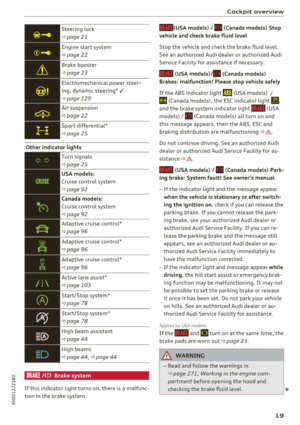 21
21 22
22 23
23 24
24 25
25 26
26 27
27 28
28 29
29 30
30 31
31 32
32 33
33 34
34 35
35 36
36 37
37 38
38 39
39 40
40 41
41 42
42 43
43 44
44 45
45 46
46 47
47 48
48 49
49 50
50 51
51 52
52 53
53 54
54 55
55 56
56 57
57 58
58 59
59 60
60 61
61 62
62 63
63 64
64 65
65 66
66 67
67 68
68 69
69 70
70 71
71 72
72 73
73 74
74 75
75 76
76 77
77 78
78 79
79 80
80 81
81 82
82 83
83 84
84 85
85 86
86 87
87 88
88 89
89 90
90 91
91 92
92 93
93 94
94 95
95 96
96 97
97 98
98 99
99 100
100 101
101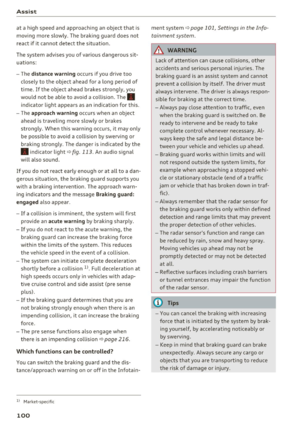 102
102 103
103 104
104 105
105 106
106 107
107 108
108 109
109 110
110 111
111 112
112 113
113 114
114 115
115 116
116 117
117 118
118 119
119 120
120 121
121 122
122 123
123 124
124 125
125 126
126 127
127 128
128 129
129 130
130 131
131 132
132 133
133 134
134 135
135 136
136 137
137 138
138 139
139 140
140 141
141 142
142 143
143 144
144 145
145 146
146 147
147 148
148 149
149 150
150 151
151 152
152 153
153 154
154 155
155 156
156 157
157 158
158 159
159 160
160 161
161 162
162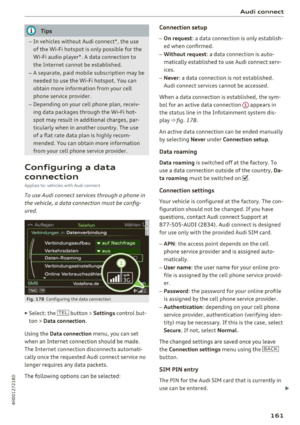 163
163 164
164 165
165 166
166 167
167 168
168 169
169 170
170 171
171 172
172 173
173 174
174 175
175 176
176 177
177 178
178 179
179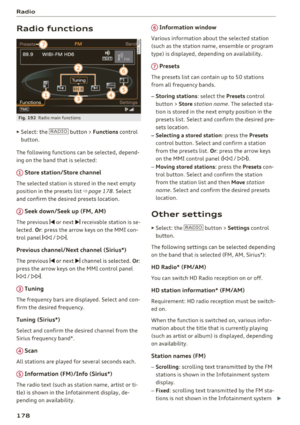 180
180 181
181 182
182 183
183 184
184 185
185 186
186 187
187 188
188 189
189 190
190 191
191 192
192 193
193 194
194 195
195 196
196 197
197 198
198 199
199 200
200 201
201 202
202 203
203 204
204 205
205 206
206 207
207 208
208 209
209 210
210 211
211 212
212 213
213 214
214 215
215 216
216 217
217 218
218 219
219 220
220 221
221 222
222 223
223 224
224 225
225 226
226 227
227 228
228 229
229 230
230 231
231 232
232 233
233 234
234 235
235 236
236 237
237 238
238 239
239 240
240 241
241 242
242 243
243 244
244 245
245 246
246 247
247 248
248 249
249 250
250 251
251 252
252 253
253 254
254 255
255 256
256 257
257 258
258 259
259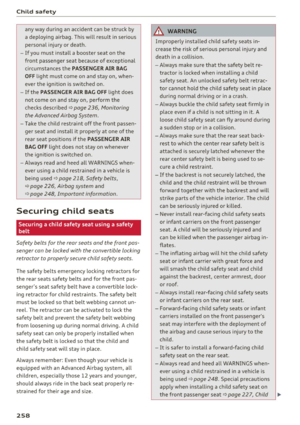 260
260 261
261 262
262 263
263 264
264 265
265 266
266 267
267 268
268 269
269 270
270 271
271 272
272 273
273 274
274 275
275 276
276 277
277 278
278 279
279 280
280 281
281 282
282 283
283 284
284 285
285 286
286 287
287 288
288 289
289 290
290 291
291 292
292 293
293 294
294 295
295 296
296 297
297 298
298 299
299 300
300 301
301 302
302 303
303 304
304 305
305 306
306 307
307 308
308 309
309 310
310 311
311 312
312 313
313 314
314 315
315 316
316 317
317 318
318 319
319 320
320 321
321 322
322 323
323 324
324 325
325 326
326 327
327 328
328 329
329 330
330 331
331 332
332 333
333 334
334 335
335 336
336 337
337 338
338 339
339 340
340 341
341 342
342 343
343 344
344 345
345 346
346 347
347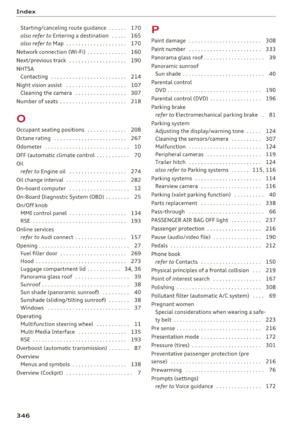 348
348 349
349 350
350 351
351 352
352 353
353






